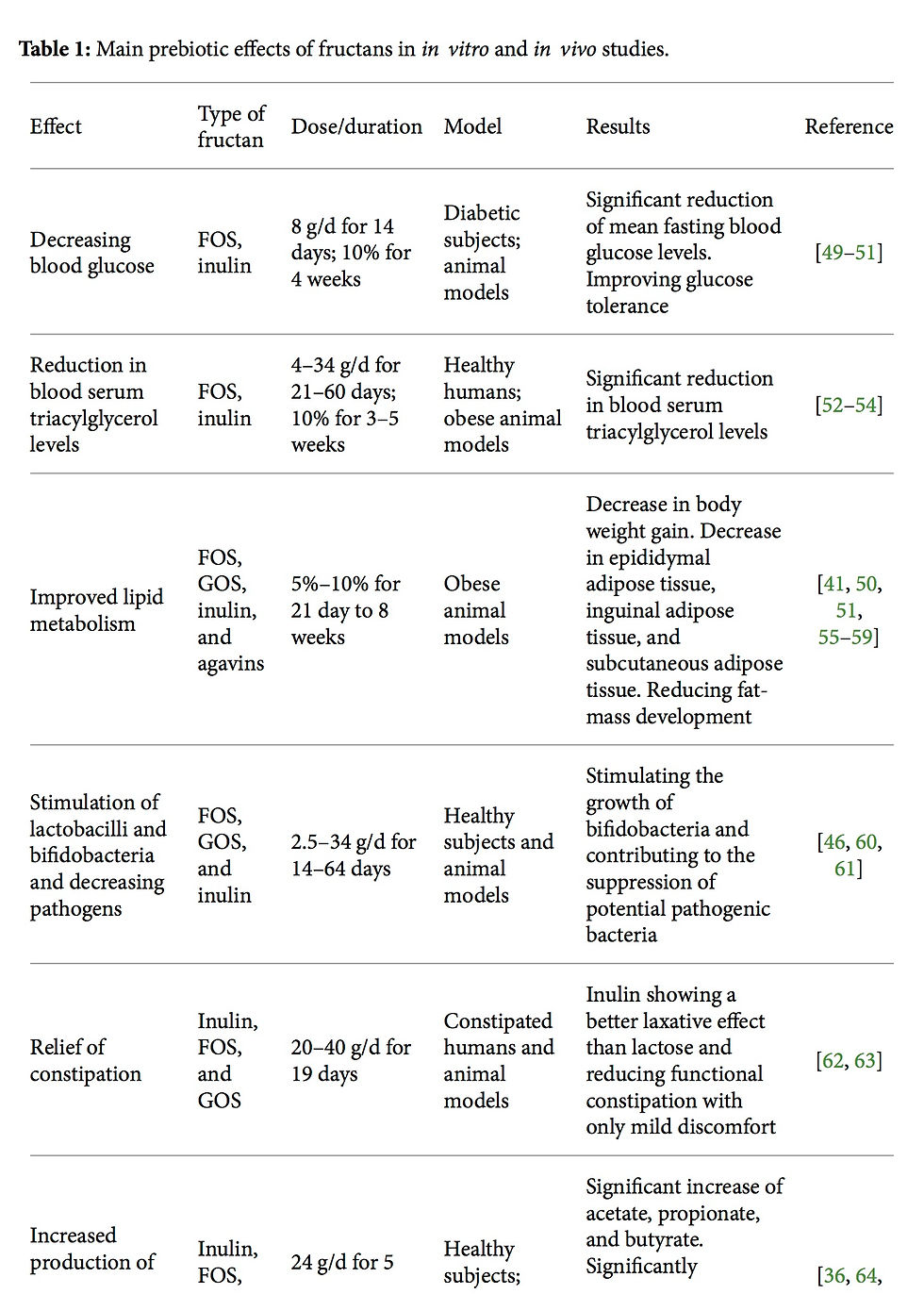IS FRUCTAN-FREE THE NEXT GLUTEN-FREE?

Whether or not you think of it as simply the new wheat-less bandwagon, there is no denying that gluten-free foods have been constantly expanding their territory on supermarket shelves during the last years. Words such as coeliac disease and gluten sensitivity have entered everyday language, popping into our head at the slightest uncomfortable feeling in our gut or glance onto a restaurant menu. It turns out however, that you may soon be seeing fructan-free labels right next to them.
A study published in the journal of Gastroenterology found that symptoms of gastrointestinal irritability were reported in participants with non-coeliac gluten sensitivity who had consumed fructan.
What was done in the study?
There were 59 participants in the study. All of them were on a self-instituted gluten-free diet prior to the study, but did not have coeliac disease. The participants were randomly assigned into three groups put on three different diets: containing either gluten (5.7g), fructans (2.1g) or placebo (neither) in muesli bars consumed for 7 days. After 7 days, when the effects of the contents of the muesli bars had washed out of the body, the participants were placed in another diet group, and this process was repeated until all participants had consumed all three different types. The symptoms were measured using the gastrointestinal symptom rating scale irritable bowel syndrome (GSRS-IBS) version.
The GSRS contains 15 items, each rated on a seven-point Likert scale from no discomfort to very severe discomfort.
Based on a factor analysis, the 15 GSRS items break down into the following five scales:
Abdominal pain (abdominal pain, hunger pains and nausea).
Reflux syndrome(heartburn and acid regurgitation).
Diarrhoea syndrome (diarrhoea, loose stools and urgent need for defecation).
Indigestion syndrome (borborygmus, abdominal distension, eructation and increased flatus).
Constipation syndrome (constipation, hard stools and feeling of incomplete evacuation).
Significant differences we found between the self-reported scores for the three different bars. The overall scores' mean values were 33.1±13.3, 38.6±12.3, and 34.3±13.9, for gluten, fructan and placebo respectively (P = .04). Mean scores for GSRS bloating were 9.3±3.5, 11.6±3.5, and 10.1±3.7, respectively, during the gluten, fructan, and placebo challenges (P = .004). Thirteen participants had the highest overall GSRS-IBS score after consuming gluten, 24 had the highest score after consuming fructan, and 22 had the highest score after consuming placebo. There was no difference in GSRS-IBS scores between gluten and placebo groups. This is an important finding, because it suggests fructan, not gluten is causing widespread bowel problems.
What is fructan?

Fructans are polymers of fructose molecules. Although they are classified into 4 groups based on their structural bonds, the inulin group (shown in the image on the left [1]), is the one found in the foods most commonly present in our diet, and therefore our main focus. Fructans are resistant to hydrolysis by human digestive enzymes but can be fermented by the colonic microbiota to produce short chain fatty acids (SCFAs), metabolic by-products that possess immunomodulatory activity.
Some common foods which contain fructan are: agave, artichokes, asparagus, leeks, garlic, onions (including spring onions), yacón, jícama, and wheat [2] .
Approximately 15% of flowering plants store fructans as reserve carbohydrates [3], they play a role in protecting the plant from drought, salt or cold stress [4].
So, should I remove fructan from my diet?

Before considering ways to substitute wheat and onions in your diet, there are other things to consider. Previous studies have shown that fructans, a soluble dietary fiber, are beneficial to human health and offer a promising approach for the treatment of some diseases [5]. They stimulate probiotic growth, interacting with the intestinal immune system, the gut microbiota, and other components of the intestinal lumen [6]. Fructans are selective substrates for probiotic bacteria stimulating probiotic bacterial growth, which can confer health benefits to the host through the several mechanisms, including immunomodulation. Fructans may also act as scavengers of reactive oxygen species [7], decreasing inflammation and improving redox status.
Some of the main prebiotic effects of fructans are shown in the table on the left [8]. Interestingly, relief of constipation was one of the effects, however the effect on constipation could not be compared with that in the study described above (I was unable to find that exact information).
The previously found positive effects of fructans on your body do make you rethink cutting out fructan completely. However, when suffering the negative effects of an irritated gut with no known cause, there may be reason to try a fructan-free diet and see if it provides any relief.
[1] Copyright © 2015 E. Franco-Robles and M. G. López
[2] van Loo J., Coussement P., de Leenheer L., Hoebregs H., Smits G. On the presence of inulin and oligofructose as natural ingredients in the western diet. Critical Reviews in Food Science and Nutrition. 1995;35(6):525–552. doi: 10.1080/10408399509527714.
[3] Hendry G. A. F. Evolutionary origins and natural functions of fructans—a climatological, biogeographic and mechanistic appraisal. New Phytologist. 1993;123(1):3–14 [4] Fructans: beneficial for plants and humans.Ritsema T, Smeekens SCurr Opin Plant Biol. 2003 Jun; 6(3):223-30.
[5] van de Wiele T, Boon N, Possemiers S, Jacobs H, Verstraete W. J Appl Microbiol. 2007 Feb; 102(2):452-60.
[6] Moreno-Vilet L, Garcia-Hernandez MH, Delgado-Portales RE, Corral-Fernandez NE, Cortez-Espinosa N, Ruiz-Cabrera MA, Portales-Perez DP. Int J Biol Macromol. 2014 Feb; 63:181-7. Epub 2013 Nov 5.
[7] van den Ende W., Peshev D., de Gara L. Disease prevention by natural antioxidants and prebiotics acting as ROS scavengers in the gastrointestinal tract. Trends in Food Science and Technology. 2011;22(12):689–697. doi: 10.1016/j.tifs.2011.07.005.
[8] © 2015 E. Franco-Robles and M. G. López.
